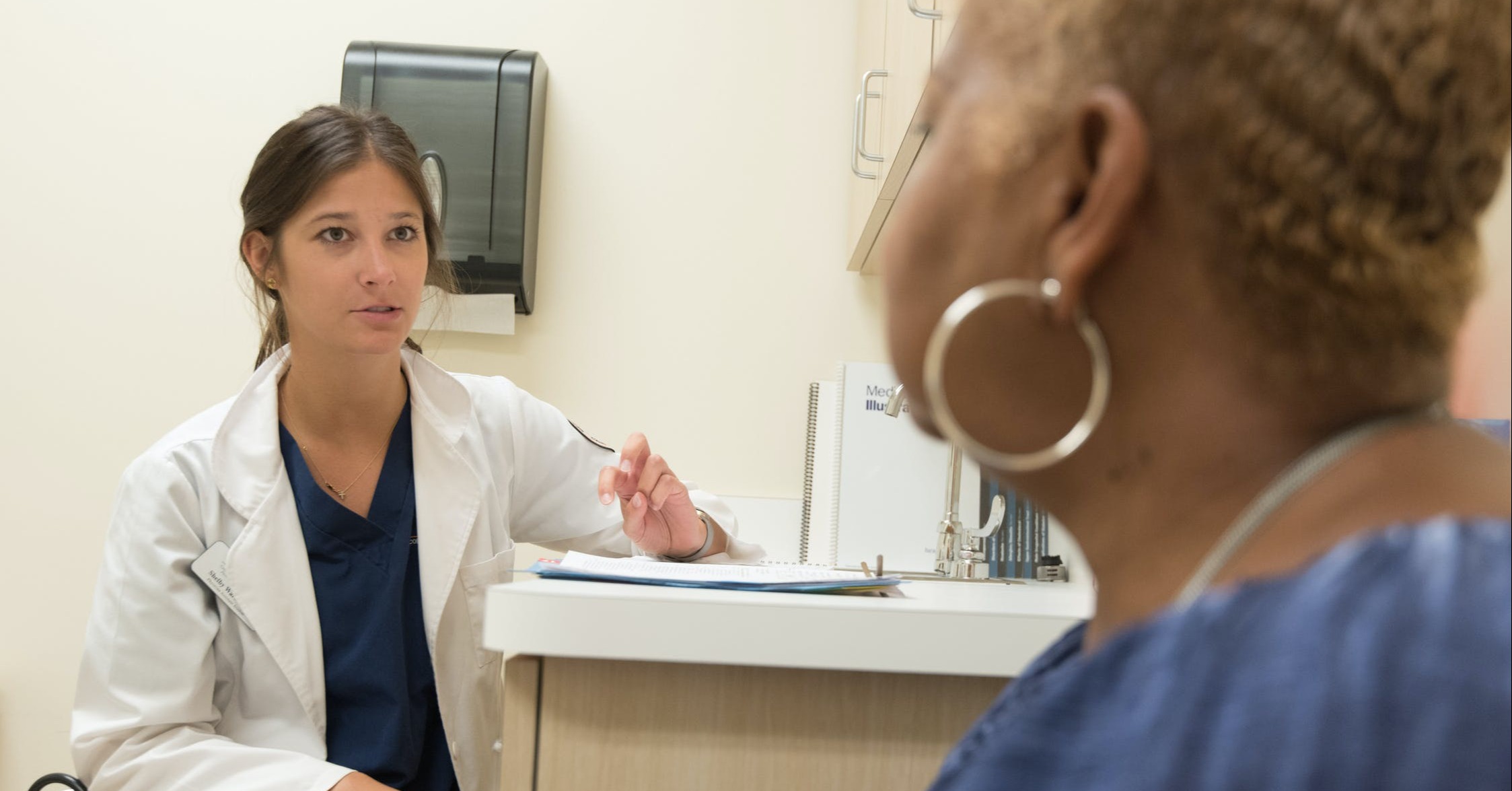
The Highest Paying States for Nurse Practitioners (NPs)
Nurse practitioners (NPs) typically earn six figures, but NP salaries [...]

The physician assistant role emerged out of practical necessity three-quarters of a century ago. In the 1940s, Dr. Amos Johnson operated a busy medical practice in rural North Carolina. Overwhelmed, Johnson realized he needed another set of hands to help perform “routine medical and surgical tasks” and perhaps even cover for him when he was unavailable. Johnson hired a young local Black man named Henry Lee Treadwell to serve as “doctor’s assistant” (a position that did not formally exist in medicine at the time), trained him in a broad range of medical knowledge, and supervised the healthcare Treadwell provided to patients. This novel and successful physician-assistant partnership lasted over 30 years, until Dr. Johnson’s death in 1975.
Dr. Eugene Stead, a professor of medicine and chairman of the Department of Medicine at Duke University, knew Dr. Johnson and Mr. Treadwell and understood the doctor assistant position’s efficacy. Stead believed it represented a good solution to the physician shortages in rural areas and underserved communities. In 1965, Stead created the first-ever physician assistant (PA) program at Duke, modeled after the generalized, comprehensive, and rapid medical education that Navy hospital corpsmen (medics) received during WWII.
The essential characteristics of the physician assistant role are the generalized nature of its training and the range of experience provided by the PA program clinical rotations. PA students complete their didactic phase of medical instruction in their first year and move to the clinical phase of training in four-week rotations in a variety of patient care clinical settings. Mandatory rotations provide the bulk of the hands-on training; students can specialize in certain areas through elective choices toward the end of the clinical year.
In this article, we’ll answer the question how do physician assistant clinical rotations work? We’ll also provide information on:
During the first two semesters of PA training, students attend classes and labs on anatomy, physiology, psychology, statistics, chemistry, biology, and microbiology. This phase—which can take up more than the first year, depending on the specific program—involves very little patient interaction.
The second phase is the clinical hands-on training that takes place in a variety of medical settings, including hospitals, clinics, and physicians’ offices. PA students undertake clinical rotations in the seven disciplines required by the PA program accrediting body, the Accreditation Review Commission on Education for the Physician Assistant (ARC-PA). These core rotations are: emergency medicine, general surgery, family medicine, pediatrics, internal medicine, women’s health (obstetrics and gynecology), and behavioral and mental health.
Some PA schools offer additional rotation opportunities. The length of each clinical experience may vary; they usually run between four to eight weeks. PA students also have the opportunity to participate in an elective rotation in their chosen specialty area like cardiology, neurosurgery, dermatology, endocrinology, radiology orthopedic surgery, geriatrics, or psychiatry.
The experience offered during clinical training is unique and valuable, and physician assistant students should take full advantage of this opportunity to work with different patient populations and practice environments in each care setting. The assigned rotations allow students to gain a real-world understanding of the specifics of that clinical practice and learn the ropes from clinical preceptors (physicians, nurse practitioners, and PAs who serve as instructional faculty) and mentors on site.
The University of Pittsburgh describes rotations as providing students with “the essential experiences to apply their knowledge and skills as they develop competence in the care of patients, under the supervision and guidance of clinical preceptors.”
Consider the University of Pittsburgh’s five-week emergency medicine rotation, in which students learn about the evaluation and management of patients in the emergency department setting, “including appropriate triage, stabilization, diagnosis and management of patients with urgent and emergent problems and skills in working with the pre-hospital emergency medical team and secondary referral systems.”
Pitt’s elective rotation inovlves another five-week placement that allows PA students to revisit clinical sites they found particularly interesting or challenging, or to experience a new opportunity designed by the student in a new specialty area.
Yale University’s clinical rotations are organized a little differently, with three rounds of four-week placements in internal medicine and primary care, two rounds in pediatrics, and single four-week placements in behavioral medicine, general surgery, women’s health, and emergency medicine—plus one elective rotation at the end of the clinical year.
Yale’s clinical phase ends with a four-week rotation set aside for the completion of a capstone project. Students are required to draw on their first-year research skills to “identify an evidence-based medicine question, conduct a literature search, analyze selected articles, and develop a paper of publishable quality.” They also must make an oral presentation of their paper.
Several PA programs include a four-credit course at the end of clinical rotations that explores the transition to professional practice. Like the training that leads up to it, this class is designed to prepare physician assistant students for the challenges they’ll face as PAs working in clinical settings in their chosen field.
The American Academy of Physician Assistants (AAPA) website offers “6 Tips for Clinical Rotations.” The list includes resources, time management strategies, and constructive help in framing questions and preparing for the clinical experience.
One contributor suggested: “Before any rotation, refresh yourself on relevant information, but don’t go overboard. Success is in knowing the extent of your knowledge, asking questions, and being confident in yourself to ask to see patients and do procedures.” Another commenter suggests to students: “Jot down topics through the day that you aren’t comfortable with, then go home and look them up. Don’t be afraid to say ‘I’m not sure.'” A third student board member advises, “Treat every rotation as a job interview—the PA community is small and you never know who knows whom.”
The collaborative and cooperative nature of the PA profession means that PA students’ classwork and clinical rotations are enriched by the shared experiences and input from other members of the program. Because PAs are trained to take a team-based approach to care, they are positioned to take advantage of opportunities to continue learning and building on their knowledge throughout their career.
As in most careers, the average salary for a physician assistant depends on a few factors, including where and what you practice. US News & World Report notes that in 2020 PAs made a median salary of $115,390, with the top 25 percent of earners averaging $135,220 and the lowest 25 percent averaging $95,730. Alaska ($150,430), Connecticut ($146,110), Rhode Island ($135,800), California ($135,180), and Nevada ($134,710) deliver the highest physician assistant average salaries.
The top-paying places of employment with the highest average annual salaries for this career are:
Most physician assistants (53 percent) work in physicians’ offices.
There are many excellent physician assistant programs to choose from. Some programs—the University of Pittsburgh, for one—offer the degree in a hybrid format, meaning that some content is delivered online.
Questions or feedback? Email editor@noodle.com

Nurse practitioners (NPs) typically earn six figures, but NP salaries [...]

Physician assistants diagnose and treat patients, prescribe medication, and perform [...]

While online physician assistant programs do not offer virtual clinical [...]

Physician assistants diagnose, treat, and counsel patients, just as doctors [...]

Physician assistants must pass the National Commission on Certification of [...]
Categorized as: Physicians Assistant Studies, Nursing & Healthcare